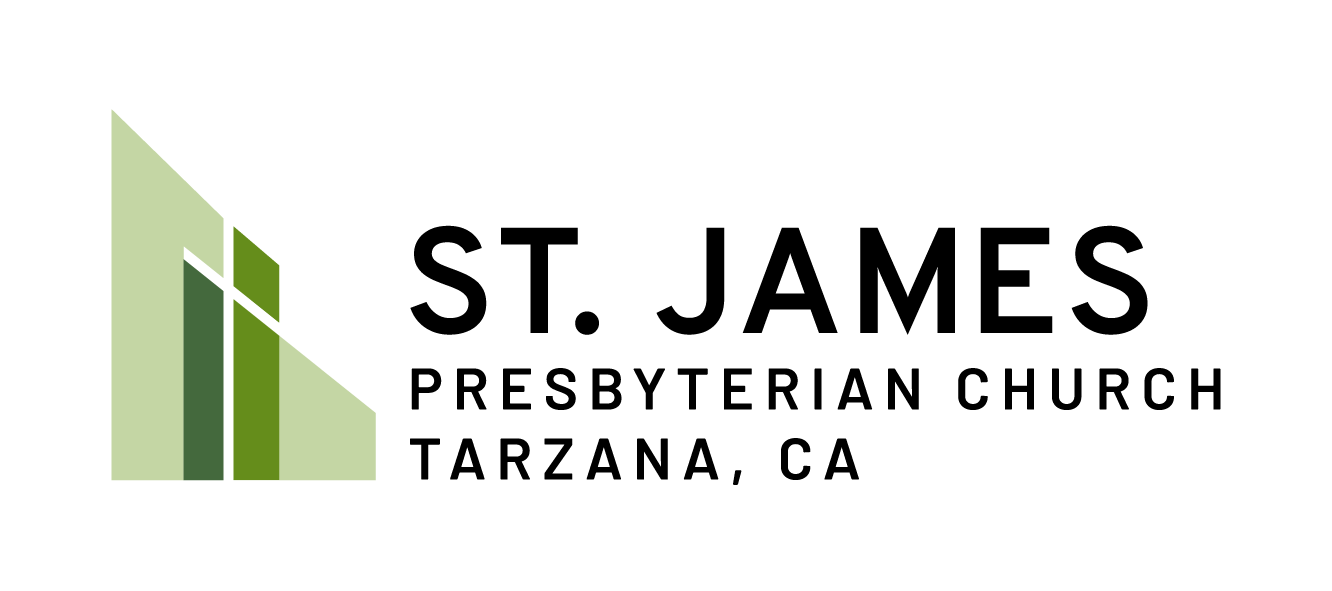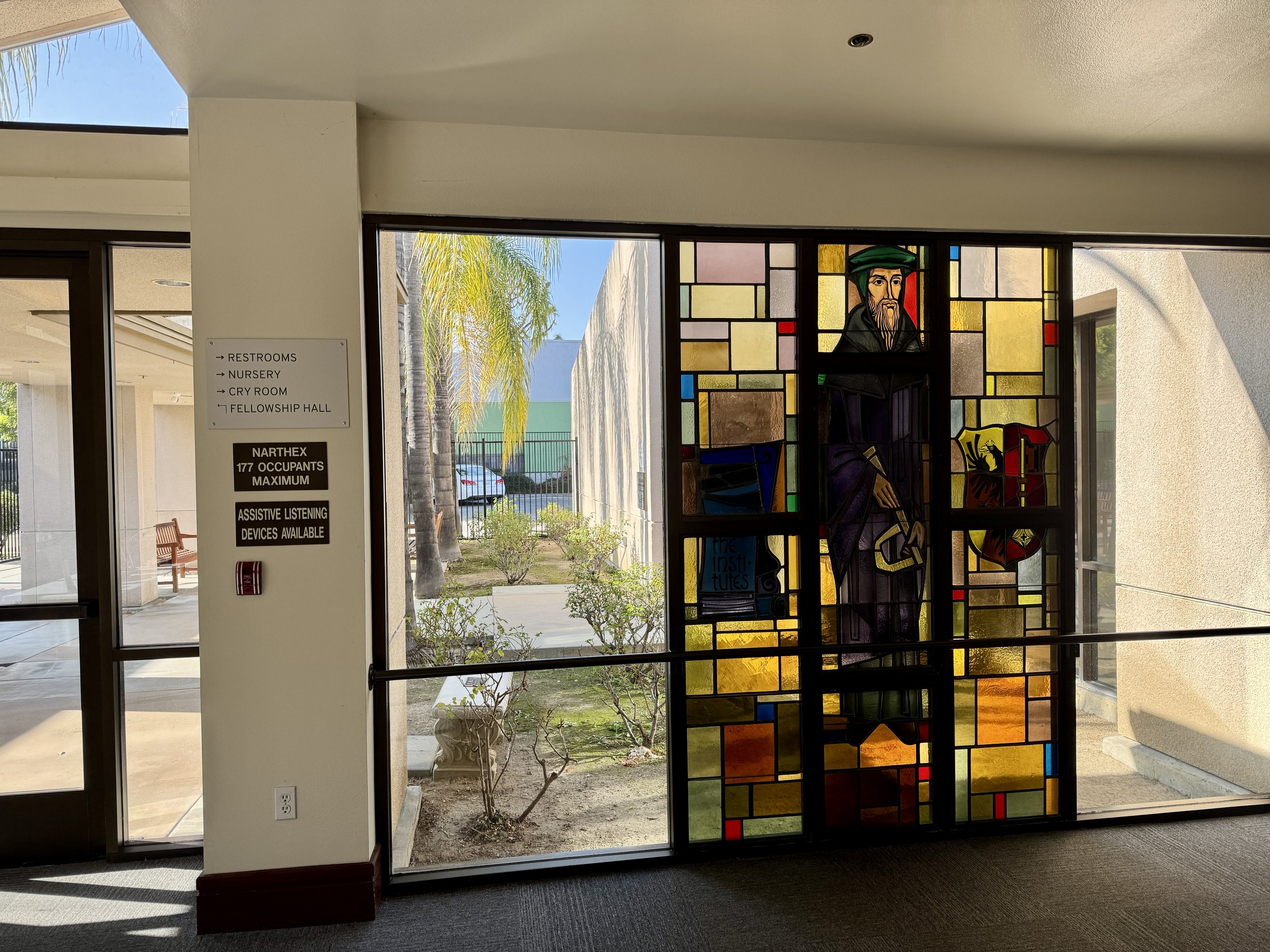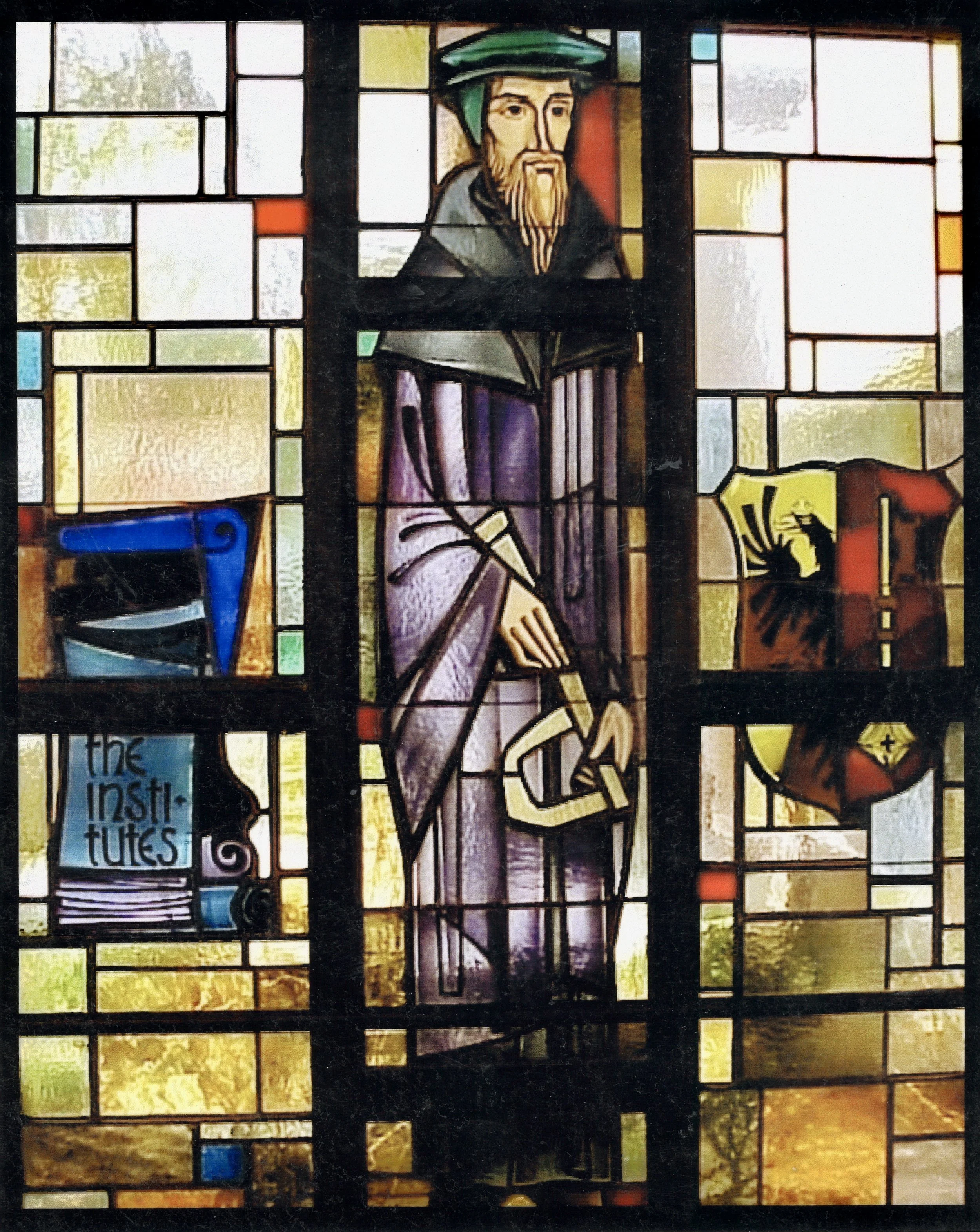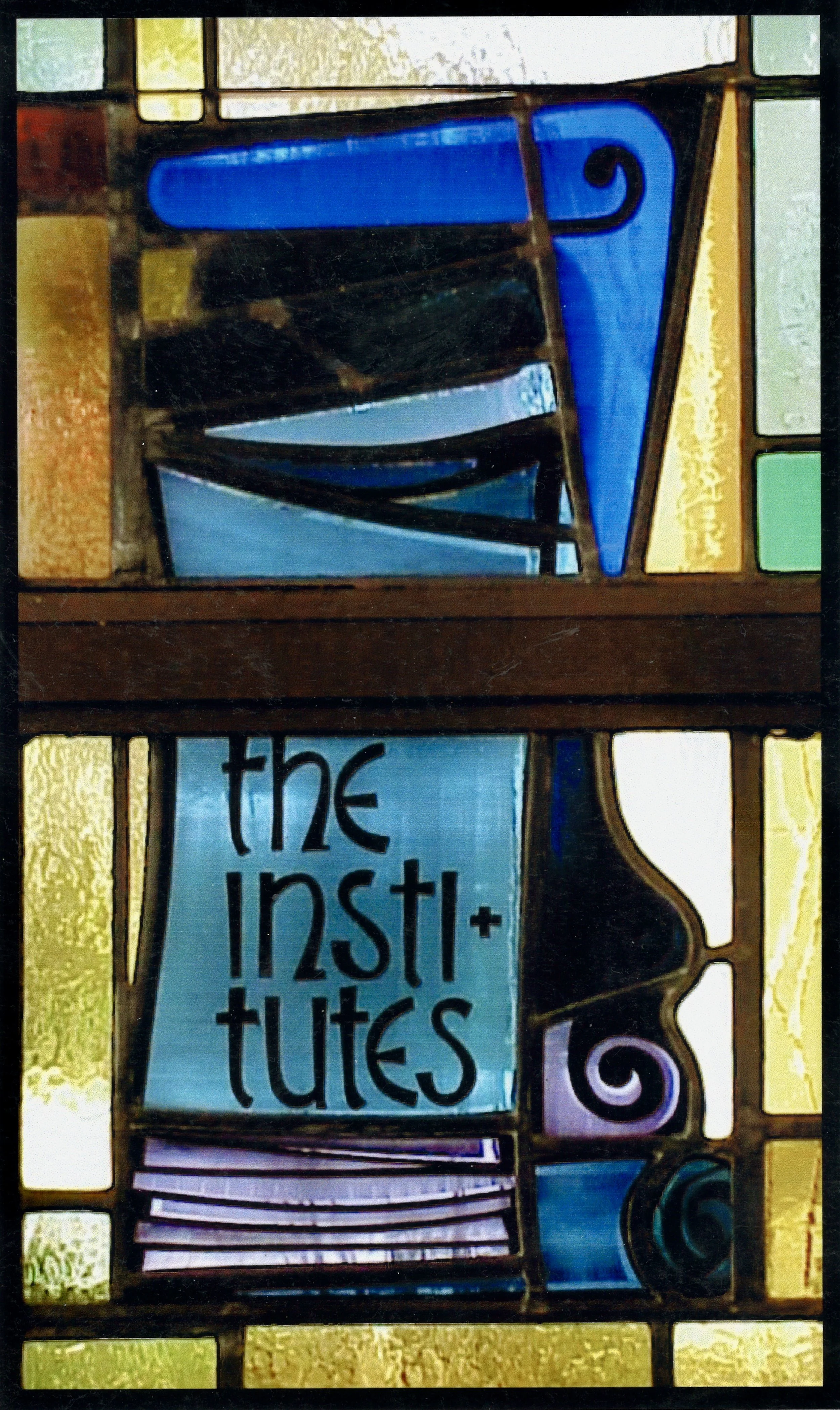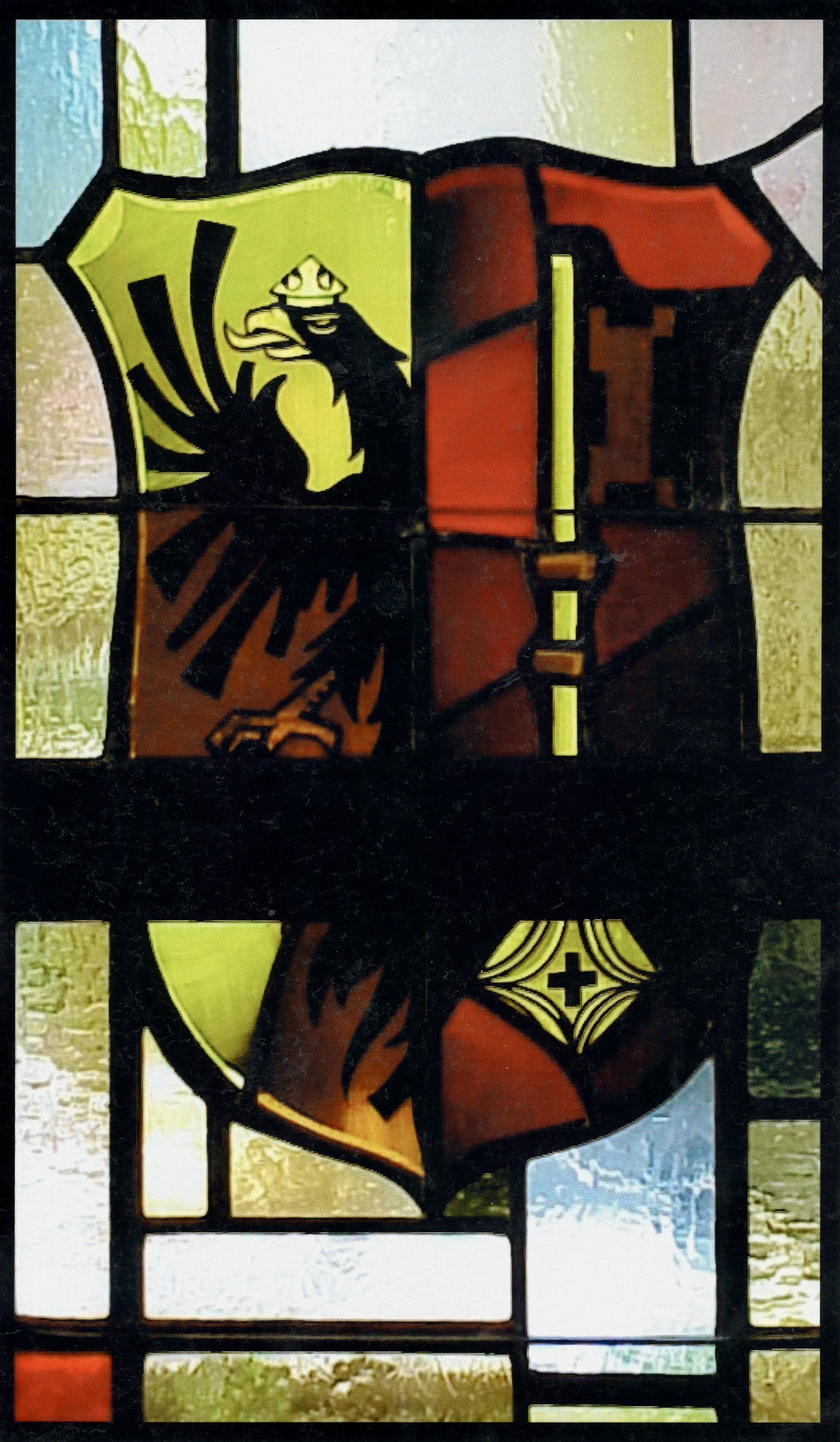Entryway/Narthex
West Window near front door.
John Calvin (1509-1564) is the best-known figure in the Reformed tradition (the theological tradition that Presbyterians are in). Born in Picardy, he fled Roman Catholic persecution in France after converting to Protestantism in the early 1530s. After settling in Geneva, Calvin came to have great influence in the city, and he helped to make it a sanctuary for refugee Protestants from all over Europe and a training ground for exiled Reformed ministers. He appears to hold a yoke (although both Calvin scholars and art historians we have consulted with this image are unsure exactly what he is holding here—other possibilities include the Greek letter rho, or a key). In the hands of Luther, a yoke would likely represent the yoke of the Law. Since Calvin had a more positive view of the Law, however—seeing it not only as something that restrained sin and convinced us of our need for grace, but also as a blueprint for a life pleasing to God—in Calvin’s hand a yoke would more likely represent our being yoked to Christ—learning from and being guided by him.
Calvin's influence on early Protestant religious thought was second only to Martin Luther's. While not especially original as a theologian, Calvin’s background in law and his gift for writing made him an ideal candidate for clarifying and summarizing Reformed theology, and for helping to give shape to presbyterian church government. As with Luther, the theology of St. Augustine was important in shaping much of Calvin’s thought, including his emphasis on God’s providence and predestination—doctrines that are not unique to Calvin, but which have come to be associated with him because of how he highlighted them. Since our human wills are corrupted by sin, there is no way for us to choose God unless if God chooses us first and heals our broken wills and desires.
Detail, John Calvin window, West.
Calvin’s best-known work was Institutes of the Christian Religion, commonly referred to—as in this window—simply as The Institutes.
(Apart from the traditional English title of this work, we rarely use the word “institutes” in this sense in English. In this title it translates Calvin’s original Latin institutio, which can also be rendered “instruction”).
The first edition of the Institutes (in Latin) was published in 1536, with a French version following in 1541. Calvin produced expanded editions throughout the following decades, with the fifth and final edition appearing in 1559 (Latin) and 1560 (French).
Comprising four “books” (The Knowledge of God the Creator; The Knowledge of God the Redeemer, in Christ; The Mode of Obtaining the Grace of Christ; and The Holy Catholic Church), the Institutes presents a summary of the major Christian doctrines from a Reformed perspective, with the purpose of drawing us more deeply into Scripture and clarifying our understanding of God’s gospel message found there.
Detail, John Calvin window, West.
The City Seal of the city of Geneva, Switzerland where Calvin lived and worked. The eagle is a symbol of the Resurrection of Christ.
